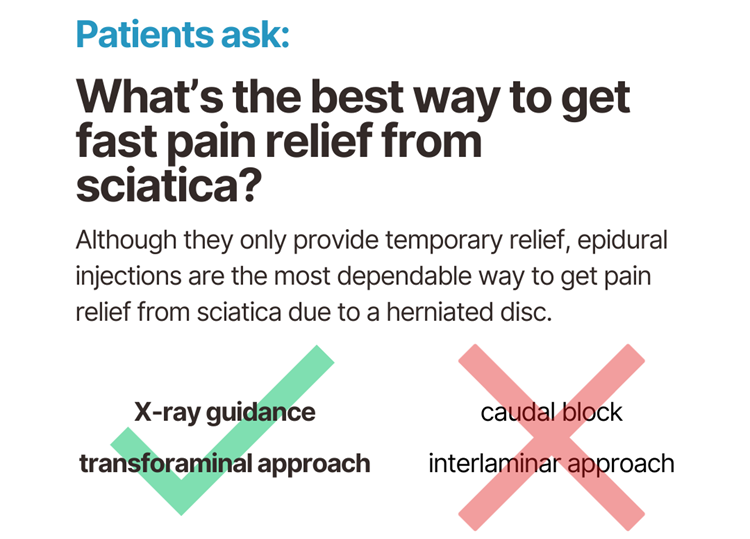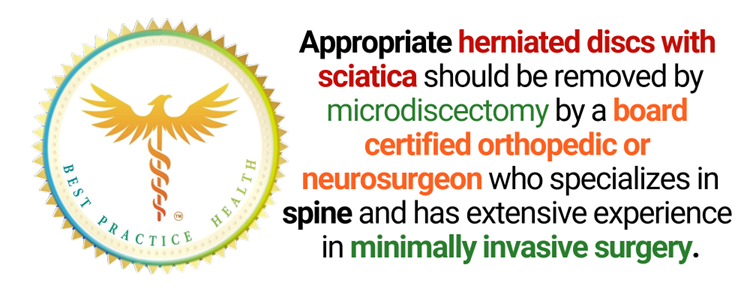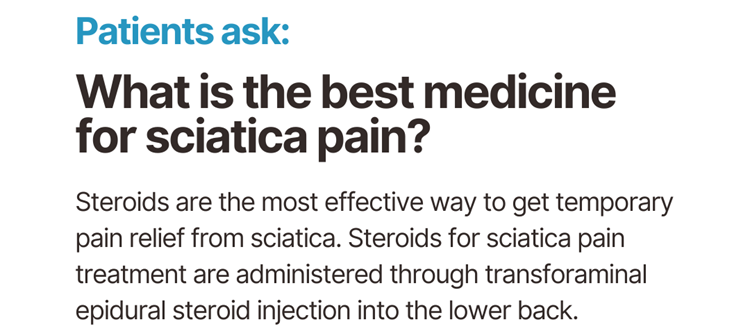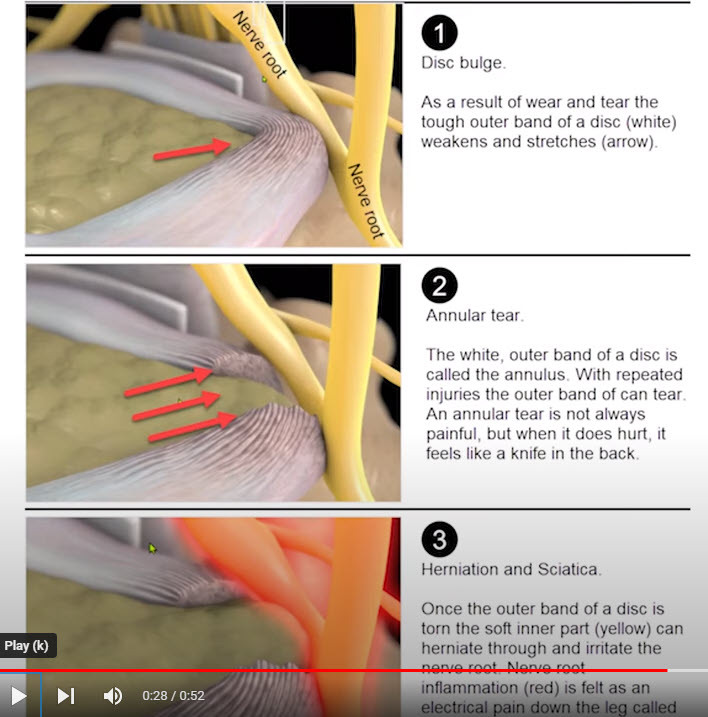
Sciatica pain, symptoms, and finding the right doctor nearby for treatment
Sciatica pain, symptoms, and finding the right doctor nearby for treatment https://bestpracticehealth.tv/wp-content/uploads/2023/09/Finding-the-right-doctor-1024x285.png 1024 285 Best Practice Health TV Best Practice Health TV https://bestpracticehealth.tv/wp-content/uploads/2023/09/Finding-the-right-doctor-1024x285.pngThe term sciatica has been used and sometimes misused over the years, but it generally refers to an electrical pain that runs from the low back down the leg caused by an irritated or compressed nerve root in the back. Sciatica is treatable in every case, but you must know when and what kind of doctor to see.

In most cases sciatica gets better by itself without the need for intervention. But it takes a long time. If we tracked 100 people with sciatica around 80 would be pain free by 6 weeks (about 1 and a half months), and around 90 by 12 weeks (about 3 months). The severity of sciatica pain can range from a nuisance to unbearable. When sciatic pain is so severe something absolutely needs to be done, and you have no neurological deficit, the most dependable method for obtaining swift relief is Epidural Steroid Injection.
Epidural injections provide about 100 hours of relief from sciatica while the steroid is active. It really helps with the radiating pain. Epidural injections are done by pain management doctors. Like all specialists, you typically see a pain management doctor on referral from your primary care or chiropractic doctor, but most take appointments directly. You should see a primary care medical or chiropractic doctor for any sciatica that lasts longer than 3 weeks. They will help you get MRI (Magnetic Resonance Imaging) and consult a pain management specialist if a herniated disc is shown.
There are two ways epidural injections in the lower back can be administered, but today’s best practice leans toward the transforaminal approach. The needle is advanced from the side because it is safer and has greater efficacy. Epidural steroid injections must always be performed under X-ray guidance to ensure precise needle placement.
Tip! If your pain management doctor suggests a caudal block, an interlaminar approach for epidural injection, or if they say they can do the block without x-ray guidance, find a new pain management doctor.
Is there really a natural remedy that can get rid of sciatic nerve pain in just 10 minutes?

You see this claim out there on the internet, and I get it. Natural remedies are usually best. Who would not want to bid farewell to the agony of sciatic nerve pain in just 10 minutes using a natural remedy? Regrettably, that is a fairy tale.
To understand why there is no natural remedy for sciatica that takes 10 minutes, or a posture or exercise to make it go away, it helps to understand the cause. Sciatica results from irritation of a nerve root. Nerve roots are irritated most often by contact with the inner part of a disc. The inner part of the disc contacted the nerve root by herniated through an annular tear. Watch this video for an illustration of this process and steps.:
How discs bulge, tear, herniate and then irritates a nerve root to cause sciatica | Best Practice
As you now understand, sciatica arises from inflammation around a nerve root, and the most common cause is a herniated disc in the lower back or neck. Consequently, there is no natural method, position, exercise, or movement that can alleviate sciatica. Fortunately, there is a way to discover relief from sciatic nerve pain within a mere 10 minutes: opt for an epidural injection. While this relief is not permanent, epidural injections usually offer several days of respite, and many individuals experience even longer-lasting relief from sciatic nerve pain.
In the event you have unbearable pain that fails epidural injection, or a neurological deficit, the best practice for the treatment of sciatica is then Microdiscectomy – Best Practice Health TV.

What is the best medicine for sciatica pain?

The best medicine for sciatica pain is steroids. Remember, sciatica results from inflammation of the nerve root. Non-steroidal anti-inflammatory drugs like Aleve and ibuprofen are highly effective anti-inflammatories. But with a herniated disc, something stronger is often needed to relieve sciatica. Steroids are the strongest anti-inflammatory medications known. Because steroids have so many side effects, the safest way to treat a herniated disc is to inject the steroid to the epidural space right by the nerve root. A Best Practice certified pain management doctor can inject steroid through a needle and bathe the inflamed nerve root. This is called transforaminal epidural steroid injection. Although the relief is temporary, this approach is the only sure-fire way to get instant relief from sciatica.
How do you cure sciatica permanently?
Everyone hopes to discover a permanent cure for sciatica. But it is essential to understand that sciatica results from the irritation or compression of a nerve root, making it primarily a consequence of structural issues. The lasting solution to sciatica hinges on addressing, and permanently alleviating, the underlying problem.

For instance, in cases involving a herniated disc, if the body cannot naturally reabsorb the disc, the definitive permanent solution is microdiscectomy surgery. When sciatica stems from a bone spur, procedures like laminectomy or lumbar laminotomy are employed to decompress the nerve root, ultimately relieving the inflammation. Structural issues need structural treatments, so no natural remedy can provide instant relief from sciatica.
Fortunately, following spine surgery to address sciatica, most patients get immediate relief from their discomfort.

- Posted In:
- Knowledge Center



 Subscribe!
Subscribe!




